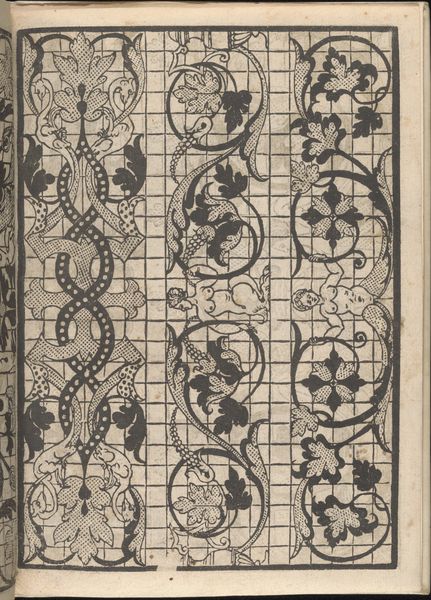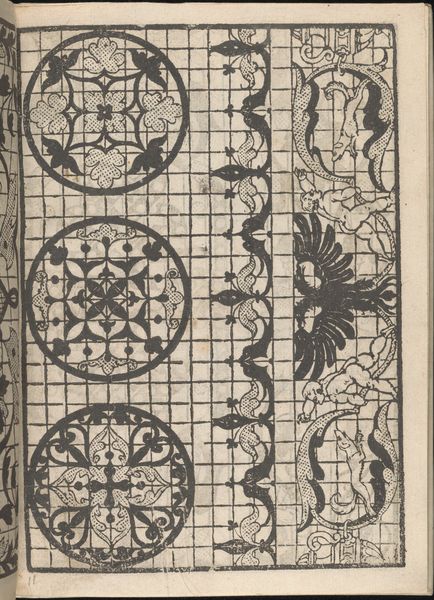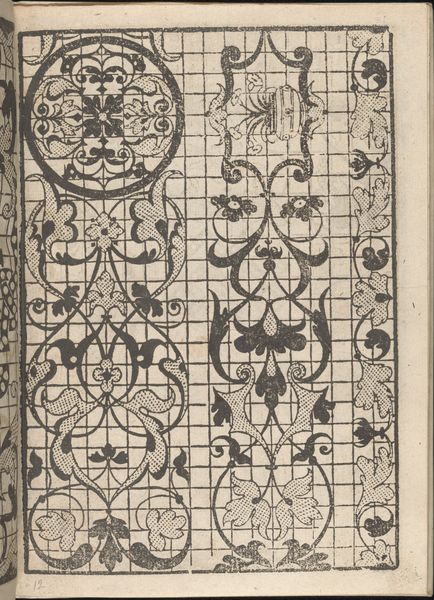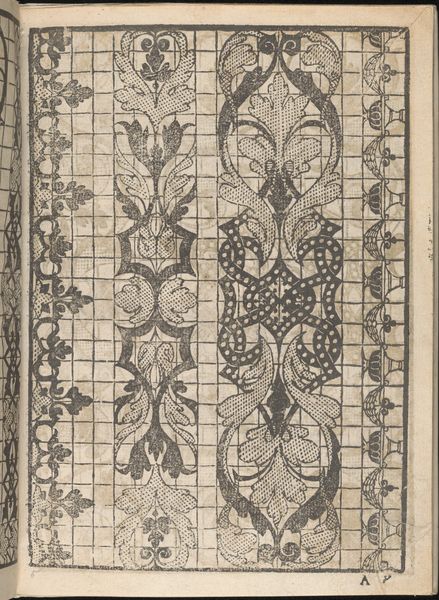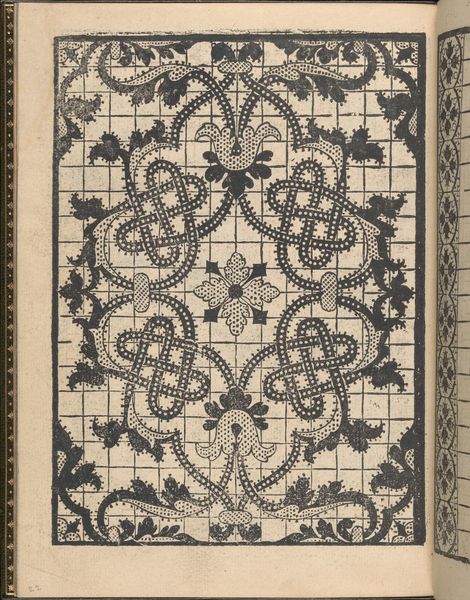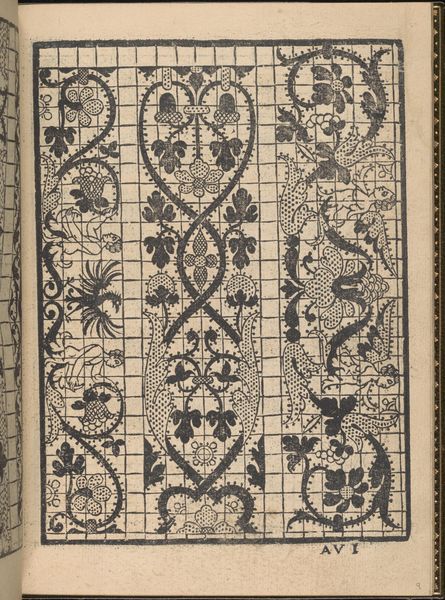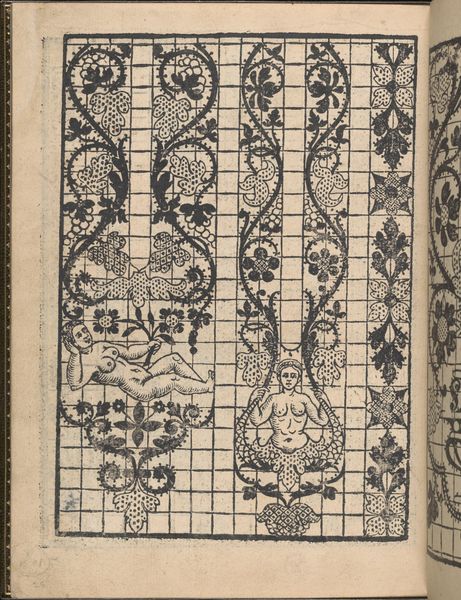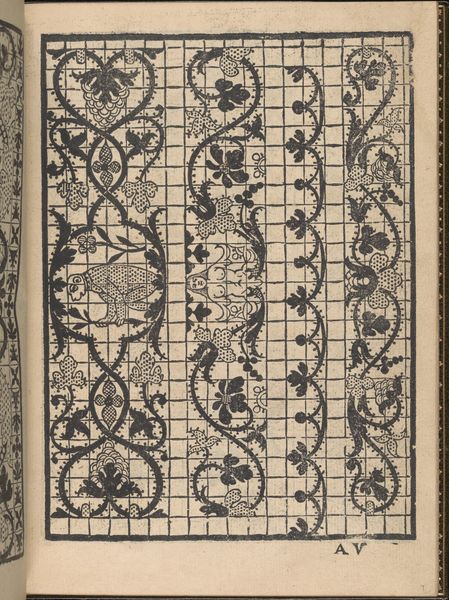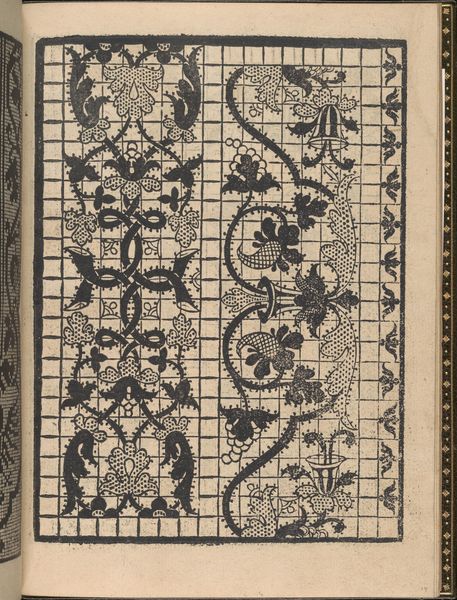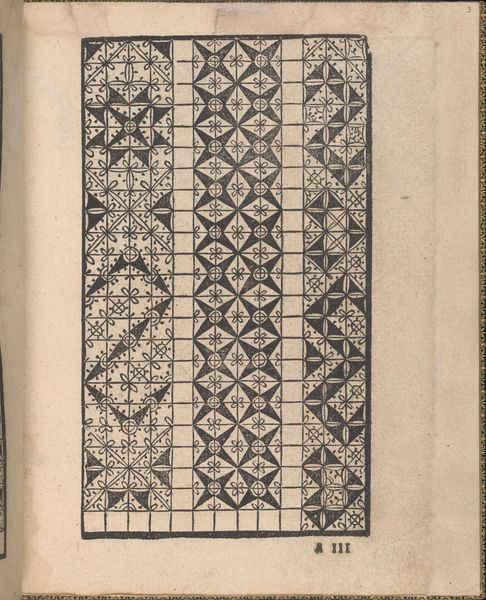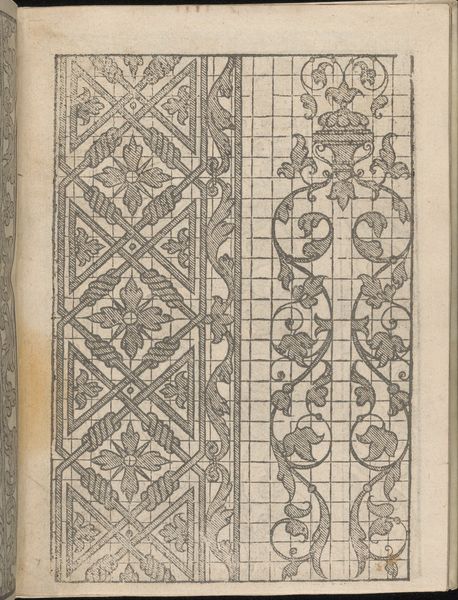
Splendore delle virtuose giovani, page 2 (recto) 1564
0:00
0:00
drawing, print, paper, pen
#
drawing
#
pen drawing
# print
#
pen sketch
#
book
#
paper
#
geometric
#
pen
#
italian-renaissance
#
italy
Dimensions: Overall: 7 1/2 x 5 1/2 in. (19 x 14 cm)
Copyright: Public Domain
Curator: My first impression is an elaborate labyrinth of forms and textures. The contrast of the dark ink against the paper creates an intriguing visual puzzle that feels almost infinite. Editor: This is a page from Iseppo Foresto's "Splendore delle virtuose giovani," dating back to 1564, currently residing at the Metropolitan Museum. It showcases a compilation of various patterns intended for needlework and lace making, an exquisite example of a 16th-century pattern book. The design uses a pen, in either ink or applied as print on paper, underscoring the era's emphasis on both craft and practical skill. Curator: Knowing it was intended for needlework throws the whole piece into a new light. Suddenly the repetition and the structure become less like abstraction and more like the framework for tangible creation. Do you think the rigid grid helps or hinders creative variation within these crafts? Editor: It's a bit of both, really. On the one hand, this grid provides a systematic foundation, ensuring uniformity across the crafted textiles; think of it as the pre-printed stencils that aided skilled, yet not elite, artisans in meeting demands with precision. Simultaneously, within this system there lies room for individual expression as artisans would be tasked to interpret and realize the suggested forms. The geometric and the natural world mix here in ways that are so very Renaissance in tone and aspiration. Curator: I imagine these pattern books offered opportunities, maybe freedom. The spread of the printing press really did democratize art, or access to it. Imagine what women were able to create armed with such books. Editor: Absolutely, it broadened artistic participation beyond traditional academies, emphasizing useful labor and artistry merged with an expanding marketplace for textile and luxury goods. Consider each replicated leaf and swirl; within them existed aspirations of wealth and access, intricately linked with labor, both in conceptualization and execution. Curator: I appreciate how looking at something so outwardly decorative ultimately unravels so much about labor and social change during that period. You begin to think beyond aesthetics toward lives being transformed by craft. Editor: And seeing how those changes are carefully penned and preserved, you gain not only historical knowledge but a deep appreciation for each connecting point within those decorative vines. The image itself has turned to an artifact: an embodiment of its moment.
Comments
No comments
Be the first to comment and join the conversation on the ultimate creative platform.
